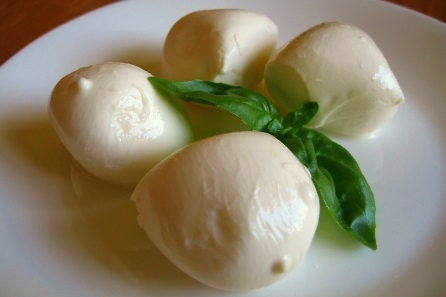Cheese
Cheese is one of the most loved and consumed foods around the world. It is a highly nutritious and palatable food that contains almost all the protein, fats, essential minerals, vitamins, and other nutrients of milk.
There are over 2,000 different types of cheese. They range from soft fresh cheese such as cottage cheese, through the mould-ripened cheeses such as camembert and blue, to the dry crumbly grating cheeses such as parmesan which have been matured for months or years.
Most cheeses are made by fermenting milk with a culture of bacteria that produces lactic acid. The lactic acid causes the curds to separate from the whey, and the cheesemakers then manipulates the curd to produce a wide variety of different cheeses.
Typically it takes about 10 litres of milk to make one kilogram of cheese. Depending on the temperature of making the cheese, the cultures used, the amount of salt added, and the maturation (ripening) time and conditions, a vast assortment of different cheeses can be produced. While cow’s milk is used to produce most cheese, there are also a variety of goat and sheep milk cheeses. Milk from other animals including buffalo, camels, and yaks is also used to produce cheese in many different parts of the world.
Types of cheese
Cheddar cheese is a hard cheese made from cow’s milk. It originated in the town of Cheddar (England). Cheddar has a flavour that ranges from mild to sharp, depending upon the maturation period. During the maturation process, cheddar loses moisture and its texture becomes drier and more crumbly. Sharpness becomes noticeable after about 12 months maturation.
Camembert is a soft and creamy cow's milk cheese that is surface ripened with a white Penicillium mould. During maturation, the growth of the mould creates the creamy texture of the cheese and its distinctive edible rind. The cheese is usually produced as small wheels which when sufficiently ripe are wrapped in wax paper and placed in distinctive packages for sale.
Blue cheese range from soft to semi-hard cheeses and can be made from cow, sheep, or goat’s milk. The distinctive blue is due to the growth of species of Penicillium mould which have been added to the curd. The mould creates a sharp flavour, and these cheeses are usually salty. The Penicillium cultures give the cheese a blue, blue-gray or blue-green spotted or veined appearance, and a distinct smell.

Mozzarella was traditionally produced using milk from the domestic buffalo in Italy, however most mozzarella is now made from cow’s milk. The unique properties of mozzarella are created using the pasta filata process – where the cheese curd is stretched and kneaded until it forms a smooth and shiny paste. A strand of the paste is then pulled out and lopped off, forming the individual mozzarella.
Swiss cheese is the common name for various cow’s milk cheeses that originated in Switzerland. Swiss cheese is a semi-hard, lightly flavored, sweet, and nutty. It is renowned for having large holes or eyes, which result from carbon dioxide release during maturation.
